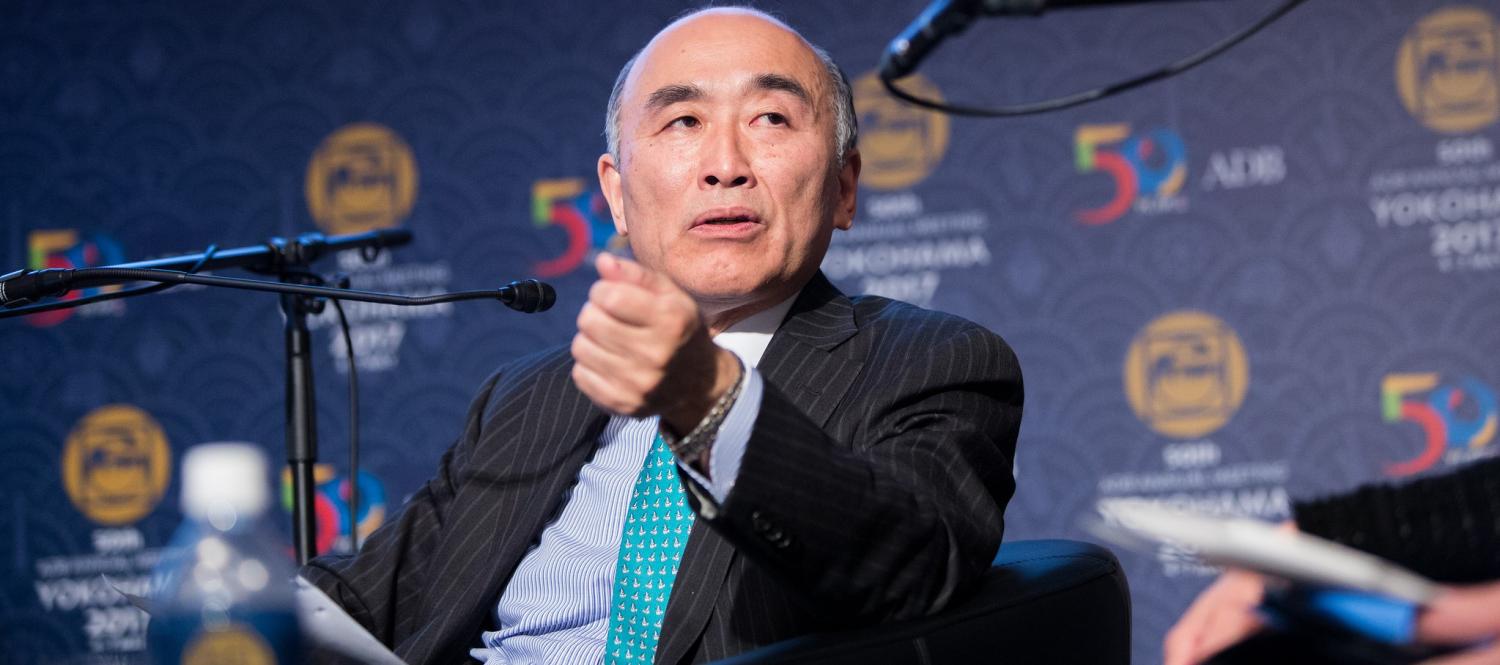With this month marking the 20th anniversary of the forced floating of the Thai baht, the IMF has joined the numerous commentaries looking back on the Asian crisis and the lessons learned. The tone of a recently published blog post by IMF Deputy Managing Director Mitsuhiro Furusawa is one of quiet satisfaction, both with the recovery and the reforms that have made these countries much safer. But a different narrative can be told.
The recovery from 1997 is described by Furusawa as 'nothing short of impressive'. In fact, it took five painful years before Indonesia's GDP returned to its pre-crisis level. In per-capita terms, restoring the 1997 level did not happen until 2004. It took even longer (until 2012) for Indonesia's share of world GDP to return to the pre-crisis level.
[[{"fid":"184251","view_mode":"wysiwyg","fields":{"format":"wysiwyg","alignment":"none","field_file_image_alt_text[und][0][value]":false,"field_file_image_title_text[und][0][value]":false},"type":"media","field_deltas":{"1":{"format":"wysiwyg","alignment":"none","field_file_image_alt_text[und][0][value]":false,"field_file_image_title_text[und][0][value]":false}},"link_text":null,"attributes":{"height":665,"width":600,"class":"media-element file-wysiwyg media-wysiwyg-align-none","data-delta":"1"}}]]
There is, however, a more important point to be made about the post-crisis growth trajectory. Perhaps the most important lesson these countries took from the crisis was that, if they wanted to be avoid a repeat, they would have to grow much more slowly. Hence Indonesia's annual growth has been just over 4% over the past twenty years. Thailand's figure is a little more than 3%. Even leaving out the trough of the crisis, annual growth has averaged around 5% for Indonesia, less for Thailand. Even the poster-child of global development, South Korea, has grown slowly.
If Indonesia had continued to grow at the 7% annual average achieved during the three decades of the Suharto era, Indonesian GDP would now be more than 60% higher than it is. These countries are paying a high price for the safety of a more sedate pace of growth. The difference between 5% and 7% may not sound like much, but it is the difference between doubling income in 15 years or doubling in just a decade.
Thus the key issue in evaluating the post-crisis period is not to laud the 'impressive' recovery, but to ask whether this slower growth was and is inevitable, and if not, what should be done to remove the constraints. If, as Furusawa's post asserts, there has been much progress in making these countries safer than they were, why is it necessary to grow substantially slower than before?
In the case of Indonesia, the critical constraint is provided by the current account deficit. If this approaches 3% of GDP, the authorities apply the brakes through tighter fiscal and monetary policy, for fear of alarming foreign exchange markets. At the same time, foreign exchange reserves are over US$120 billion – in effect Indonesia borrows this amount from foreigners and re-invests the proceeds back in foreign assets (mainly US government securities) with an interest rate return one-quarter of the cost of borrowing these funds. This is the insurance premium which Indonesia pays so that it is ready for a reprise of 1997, when foreign capital fled the country.
If the new post-crisis world was so much better than before, this kind of insurance would not be needed. In this ideal world, the floating exchange rate would remove the external constraint. Capital flows would be less volatile, and if a shock occurred, Indonesia could rely on being able to draw immediately on the shared insurance provided by the IMF's facilities, the Chiang Mai Initiative Multilateral (CMIM), and the various bilateral swaps the IMF sees as now being available for such eventualities.
The reality is that Indonesia (and its neighbours) recognise that they live in a world of flighty capital. Exchange rates still show an unaccountable degree of volatility, even for the big countries with deep financial markets. Exchange rate flexibility doesn't remove the external constraint. Financial sectors (both domestic and overseas) are still fragile. The 2008 financial crisis demonstrated what can go wrong, even in developed economies. And, left unsaid in the IMF commentary, there is still a deeply held stigma about drawing on IMF programs.
Indonesia could become less reliant on these fickle sources of foreign funding if its own financial sector had developed breadth, depth and resilience. But the banking sector, as a percentage of GDP, is half its size before the crisis – it has never fully recovered and still has many fragile banks. Other elements of finance (equity markets, corporate bonds, insurance, and pension funds) are still embryonic.
Is the IMF more prepared to help in the next crisis? Certainly, its assistance programs are more readily available than the 1997 programs, which were inadequate in size and ill-suited to the nature of the crises. But the top-of-the-list of foreseeable problems in Asia (excessive domestic debt in China and Japan) aren't amenable to IMF programs, and any crisis would have to be largely handled by the domestic authorities. The IMF was largely irrelevant in the 2008 financial crisis. The ongoing 2010 Greek debt saga, not foreseen, has left the IMF with its operating principles badly stretched, the recipient of the program with its GDP down 25% and foreign debt levels that the IMF itself describes as 'unsustainable'. It still has no procedures for 'bailing-in' foreign creditors. Capital flows are now so large and potentially volatile that the IMF's own resources seem puny, and coordination with other sources (CMIM or US Fed swaps) remains untested.
The IMF has a thankless task – by the time its assistance is called on, the problems are already out of hand and crisis medicine is inevitably bitter. Perhaps the only way to keep morale high is to overstate how much has been achieved since the last crisis, and hope for the best when the next one arrives.

